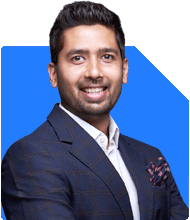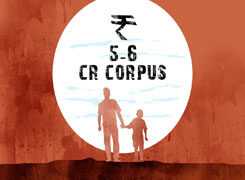45, Rs. 20 lakhs saved for sons' education: Debt funds or FDs?

I’m 45 with two sons aged 16 and 12. We’ve saved around Rs 20 lakh for our children’s education. Should I invest in debt funds or FDs to preserve capital for the next 5 years?
Given your goal of preserving capital for the next 5 years, debt funds and FDs are both viable options. Both offer relatively low risk and can be suitable for your objective.
Debt Funds:
• Potential for Higher Returns: While not guaranteed, debt funds can often offer higher returns than FDs, especially in a rising interest rate environment.
• Liquidity: You can typically withdraw your investment from a debt fund without penalty, providing flexibility.
• Diversification: Debt funds invest in a variety of debt securities, which can help mitigate risk compared to a single FD.
FDs:
• Guaranteed Returns: FDs provide a fixed interest rate and guaranteed principal return, making them a safer option.
• Simplicity: They're easy to understand and invest in.
• Tax Benefits: Interest earned from FDs may be eligible for tax deductions under certain circumstances.
Key Considerations:
1. Risk Tolerance: If you're risk-averse, FDs might be a more comfortable choice.
2. Time Horizon: For a 5-year horizon, both options can be suitable.
3. Interest Rate Expectations: If you anticipate rising interest rates, debt funds might offer better returns over time.
4. Liquidity Needs: If you foresee the need to access the funds before the 5-year period, ensure both options offer sufficient liquidity.
A Balanced Approach:
Consider a combination of debt funds and FDs. This can help you diversify your investments and potentially improve your overall returns while maintaining a reasonable level of risk.
Professional Advice:
Consulting with a financial advisor can provide personalized guidance based on your specific circumstances and goals. They can help you assess your risk tolerance, determine the appropriate asset allocation, and select suitable debt funds or FDs.
By carefully considering these factors and seeking professional advice, you can make an informed decision that aligns with your financial objectives for your children's education.
You may like to see similar questions and answers below
Ramalingam Kalirajan |10870 Answers |Ask -Follow
Mutual Funds, Financial Planning Expert - Answered on Sep 10, 2024
Ramalingam Kalirajan |10870 Answers |Ask -Follow
Mutual Funds, Financial Planning Expert - Answered on Apr 18, 2024
Kirtan A Shah | Answer |Ask -Follow
MF Expert, Financial Planner - Answered on Aug 30, 2023
Ramalingam Kalirajan |10870 Answers |Ask -Follow
Mutual Funds, Financial Planning Expert - Answered on Sep 29, 2025
Dr Dipankar Dutta |1837 Answers |Ask -Follow
Tech Careers and Skill Development Expert - Answered on Dec 05, 2025
Dr Shyam Jamalabad |108 Answers |Ask -Follow
Dentist - Answered on Dec 05, 2025
Dr Shyam Jamalabad |108 Answers |Ask -Follow
Dentist - Answered on Dec 05, 2025
Dr Shyam Jamalabad |108 Answers |Ask -Follow
Dentist - Answered on Dec 05, 2025
Dr Dipankar Dutta |1837 Answers |Ask -Follow
Tech Careers and Skill Development Expert - Answered on Dec 05, 2025
Ulhas Joshi |280 Answers |Ask -Follow
Mutual Fund Expert - Answered on Dec 05, 2025
Dr Dipankar Dutta |1837 Answers |Ask -Follow
Tech Careers and Skill Development Expert - Answered on Dec 04, 2025
Ravi Mittal |676 Answers |Ask -Follow
Dating, Relationships Expert - Answered on Dec 04, 2025
Anu Krishna |1745 Answers |Ask -Follow
Relationships Expert, Mind Coach - Answered on Dec 04, 2025
Anu Krishna |1745 Answers |Ask -Follow
Relationships Expert, Mind Coach - Answered on Dec 04, 2025





























